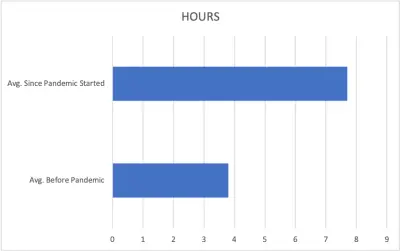{Sneak peek: We all know about bullying but cyberbullying is often a more hidden form of torment that children don’t discuss. Learning the cyberbullying stats and gaining awareness is key to helping prevent it.}
Children are exposed to the digital world more now than ever before. With the opportunities for learning and connection also come dangers of cyberbullying. Parent and author Katie Kuperman is guest posting today to share her insights on cyberbullying stats and impacts. She shares valuable tips on what parents can do to help prevent their children from being a victim but also how they can help their children stand up for others.
We are a digital world. Ever since the start of the internet, we’ve been on a slippery technological slide that’s constantly introducing new advancements, otherwise known as “the next latest and greatest” device or platform. Think of smart phones, email, instant messaging, snapchats, social media and online gaming. Children are growing up spending far more time on digital devices than generations in the past. By the time tween and teen years hit, it’s even more apparent, and unfortunately, there are serious repercussions.

Overly digital
Pre-pandemic, the average time a teenager spent online was about 3.8 hours per day. Take a second to digest that. Screen time is not a new conversation, and there have been concerns and recommendations for appropriate time allotments circulating for years now. In my opinion, there was already a problem. Fast-forward to today…
What COVID-19 has to do with it
Since 2020, COVID-19 has caused schools to close multiple times and for students to pivot to online learning for extended, intermittent periods. On November 1, 2021, JAMA Pediatrics published a study on the screen time of teens. It found that aside from online school screen exposure, our youth are adding another 7.7 hours of recreational screen time to their day! When we consider the fact that they are also on screens for 5-7 hours a day for school, that is
an astronomical number.

Making the connection
A young person’s idea of having fun online undoubtedly includes time on instant messengers, social media and online games. It’s here where cyberbullying takes place. While years ago bullying could always be seen (for example, the push in the hallway, the fight in the schoolyard or the perpetual teasing at lunch hour), now it isn’t so visible. In the anonymous world we call “online”, young people can easily hide behind their screens only to negatively impact the lives of others in powerful ways. Bullying is now cyber – the post of an embarrassing image, the stolen account information, the spreading of rumours through casual chat comments.
Related reading: The Revealing Reason Why Kids Love Video Games
See the cyberbullying stats
Recent studies and facts have shown:
- Mean comments are the most common type of online bullying (22.5%)
- 35% shared a screenshot of a person’s photo or status to be laughed at
- 61% of teens say they were bullied because of their appearance
- Before the age of 18, 7 in 10 young people experience cyberbullying
- 64% of victims say they know their perpetrator from in-person situations
- Bullies often target people with mental illnesses or disabilities
- Cyberbullying is growing (32% of teens each year from 2007 to 2016 jumped to 43% in
2019)

Just because you can’t always see it…
Even though it isn’t physically harming, the effects of cyberbullying on victims are highly problematic and potentially long-term. In general, bullying threatens people’s mental wellbeing and overall quality of life. In fact, some studies suggest that cyberbullies are even more aggressive, since they rarely experience any real-world consequences for their actions. If this is true, victims’ suffering may be even greater. Victims of cyberbullying typically experience:
- Significantly lower self-esteem
- Increased social anxiety
- Depression
And many also have suicidal thoughts.
It’s time to change our perspective
Somewhere along the way, we’ve fallen off the track. We’ve lost our way. We’ve forgotten how to be decent human beings. Instead of dealing with our own issues and problems productively, we take out our anger and insecurities on others. We bottle up our emotions until they come out in hurtful ways. It’s become a habit – a trend. And the breaking of it is long overdue. Sure, bullying may always be around in some form, but cyberbullying stats are high to the point that it’s become far more than simply a “phase” our young people go through on their way to becoming good members of society. It’s an endemic. And it’s ruining people’s lives. The only way to begin our transformation away from it, is to TALK.

TALK to your parents about what you’re going through online.
TALK to your kids about spending less time online and the proper etiquette when they do.
TALK to your perpetrator and demand that they stop.
TALK to your friends about kind behaviour online.
TALK about what it is that makes you want to cyberbully others.
TALK to school authorities about the problem.
TALK strongly and assertively to stand up for yourself.
Small differences go a long way
Kids: I invite you to…
- Decide on your max screen time per day – and stick to it!
- Pursue other interests you have that don’t involve a device (dancing, painting, music, nature walks, Yoga, sewing, skiing, snowboarding, scootering, skateboarding, biking, working out)
- Do something else that makes you feel good (organize a closet, clean out your desk, give away old clothes)
- Pick up a book
- Go grocery shopping with your parents

Parents: I invite you to…
- Talk with your kids about the importance of leading a balanced life
- Talk with your kids about why limiting screen time is smart, and agree on a time limit together
- Set up an app that automatically shuts off when the max limit is reached (it takes the onus off you!)
- Invite your kids to do something together (consider their interests and build on that)
- Incorporate quality time – not separated time

Educators: I invite you to…
- Talk about bullying and cyberbullying in your classes
- Give cyberbullying stats and educate on repercussions and negative effects
- Host a workshop
- Provide helpful tips and guidelines to be safe and respectful online
- Recommend minimizing screen time and setting daily limits

If we can FEEL something, maybe we can CHANGE something

My book, The Only Way Out, is a young adult novel about bullying, cyberbullying and mental health. It’s a gripping tale about a bully, a victim and a bystander whose lives are changed forever.
Taking you through a whirlwind of emotions, I want you to truly feel something as the story goes from tragedy, to shock, to revelation, to hopeful inspiration. Because I know that if you really feel it, you’ll be ready to talk, you’ll be ready to change, you’ll be ready to make a difference in your life or someone else’s.
*Part of all book proceeds will be donated to the Amanda Todd Legacy Foundation.
Join Katie’s mailing list and get a FREE audiogram.
Katie Kuperman is a passionate copywriter, author, entrepreneur and mother situated in Toronto. It is her dream that The Only Way Out may have a positive effect on the perceptions, understandings and actions of those who read it.


Leave a Reply